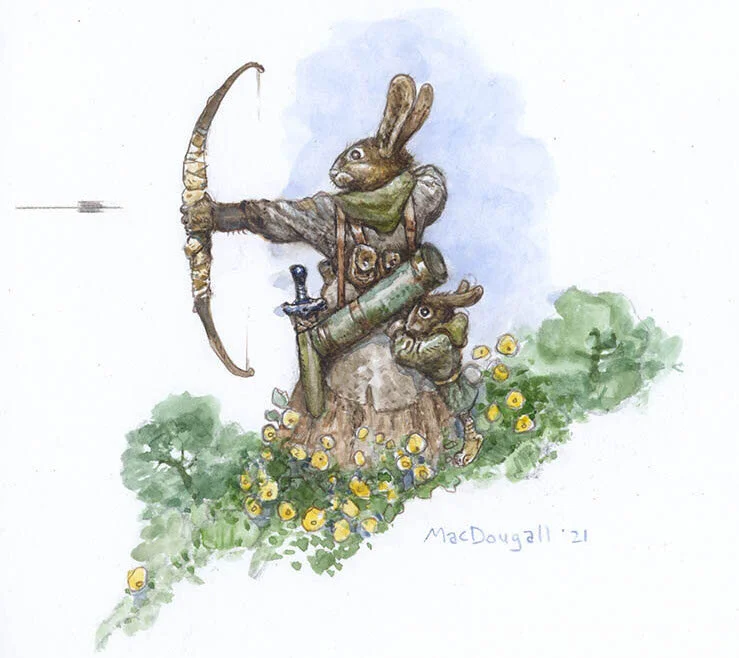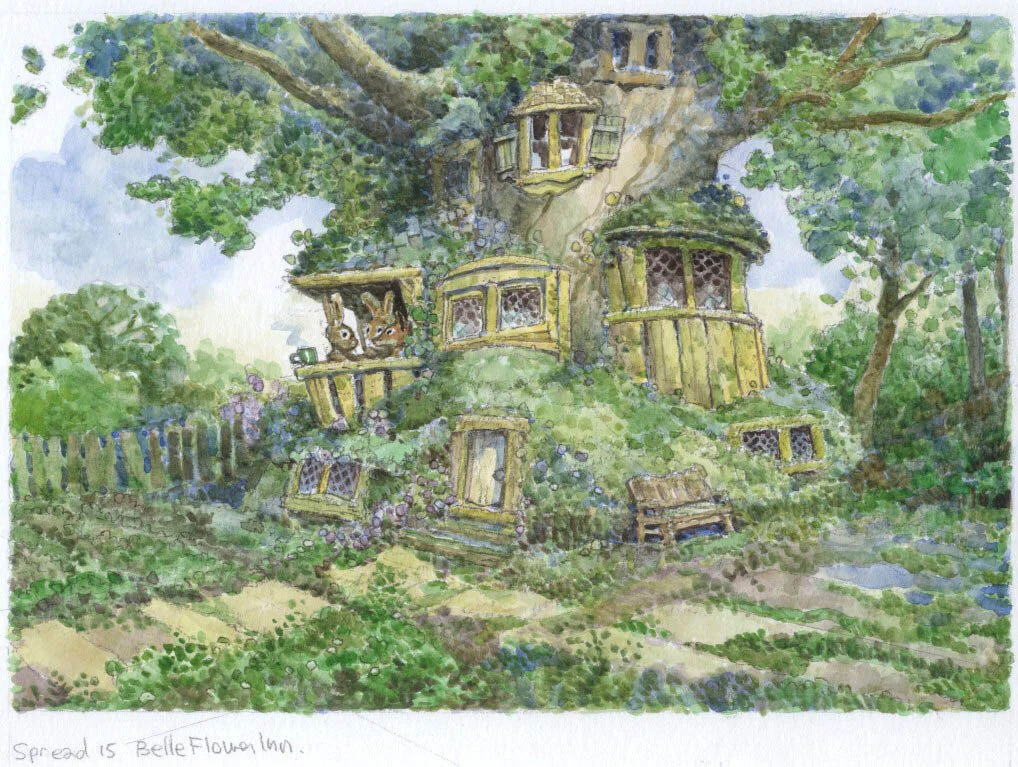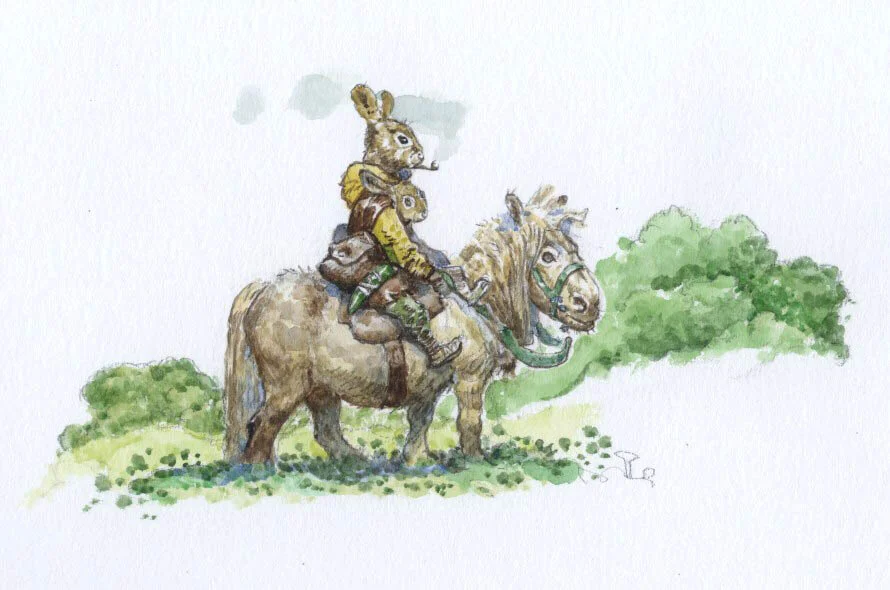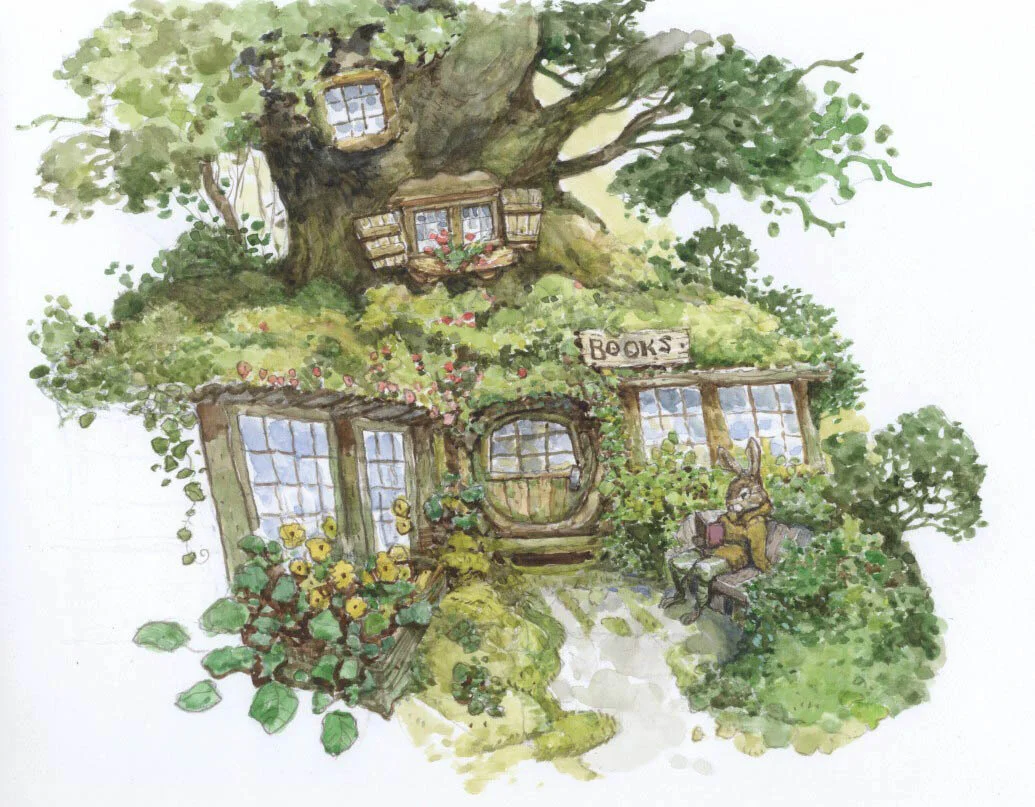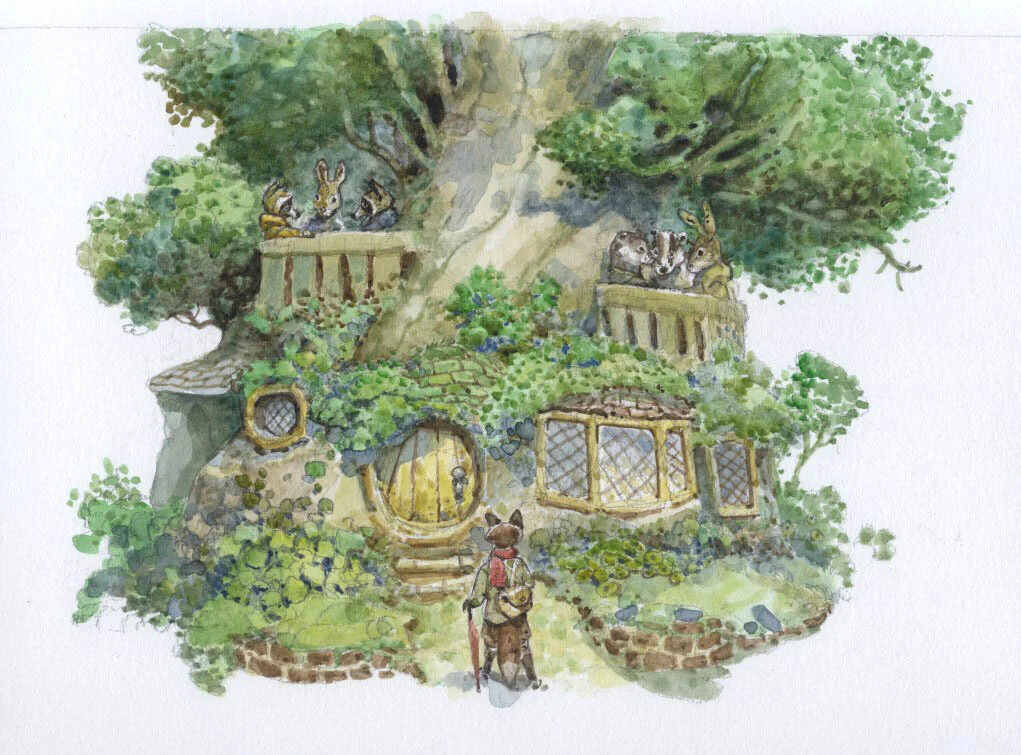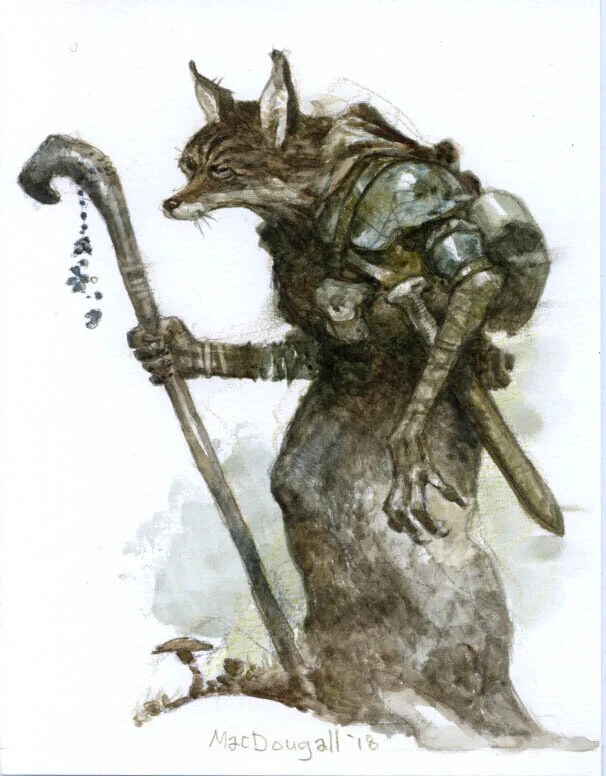Larry MacDougall
/Where did you grow up? At what age did you start thinking about pursuing an artistic career?
I was born and raised in Ontario Canada. We lived near the woods as do most people in Canada and I spent a great deal of time there as a kid. We hiked and goofed around out there and in the process, I developed a love of nature. Like most kids, I started drawing at a very young age and then just never stopped. For me then, it was just another way to play and I always had fun with it. So when it came time to decide what college or university I was going to go to I chose art school. There was really no other choice for me. I wasn’t interested in anything else… a college nearby offered animation and it looked like fun so I chose that.
Did you go to an art school or are you self-taught? How did you develop your skills?
The drawing training I received at Sheridan College where I studied animation was very good. The emphasis was on drawing fundamentals such as structural drawing and constructive drawing. The idea being that as an animator you would have to be able to draw characters or environments out of your imagination that are solid, three-dimensional, and look like they exist in space. This did not come naturally to me but I could see the merits of this approach instantly and worked hard to figure it out. There were many great instructors there to help out along the way. What I learned about drawing in college I still use and try to build on to this very day. This may not be a popular opinion but I found the drawing skills in the animation department to be generally higher than the drawing skills in the illustration department. The reason for that I think was the emphasis on life drawing and structural drawing. The animation kids drew a lot more out of their heads and the illustration kids drew more from reference - just a personal observation having spent time in both camps.
Have you always been supported in your artistic path or has it been challenging to let your family and friends understand your choice?
My family has always offered me a great deal of support and I would certainly not have made it through some of the tougher times without them. But friends on the other hand can be a fickle bunch. The first time I told some people I would rather stay home and draw than go out partying I got some looks. If you are going to be serious and try to drag yourself up to a professional skill level sacrifices will have to be made. Fairweather friends should be the first to go. Your real friends will stick with you no matter how art crazy you get.
What was the strongest influence you had when you were growing up ( artists, movies, cartoons, comics, etc.. )?
Growing up I found inspiration all over the place. The newspapers back then had lots of cartoons in them and so did magazines and advertising. I liked animation when I was a kid, especially the old Disney stuff when it came on TV. I bought comic books but my real favourite was Mad Magazine. Mad was like a museum for the best cartoonists working in the business at that time. Mort Drucker was my number one but I liked them all. All those guys could really draw.
From the initial client idea to the final work: What goes through your mind and what is the method you use when starting a project? Could you describe it?
When an assignment comes in the first thing I think is, how can I make this fun? How can I make this something I want to draw? I know I have to draw it if I want to get paid but what is going to make me want to draw it. This is my primary concern, especially if it is a big project like a kid’s book that will need dozens of paintings and months and months to complete. If I can’t find a way to have fun with it, it will be a grueling project. I’ve done it that way before and I don’t recommend it. It will be the opposite of fun. That’s why I was so eager to finally create my project, which I’ve done. It’s called Gwelf, A Survival Guide and I love working on it. I’ve been on it now for three years and I still love it. We’ve just started working on the second book.
What is your process in creating your art and what are your favourite tools?
I am primarily a watercolour artist. It is a very tricky process to use watercolour but I have been using it for literally decades now so I am starting to feel a little less afraid of it. In order to feel comfortable with a medium, you have to know how to fix your mistakes. I have learned over the years to use gouache to paint over problems and I’ve learned to lift out mistakes with a wet brush. I’ve also learned to design my illustrations for watercolour, knowing what will and will not lend itself to the medium. What I did for years was to design my work on printer paper first and then transfer it to the final watercolour paper with a lightbox. This allowed me to carefully plan everything out and get it all just right before painting. I now find this process tedious and boring. I’m much more interested in drawing straight onto the finished paper now and letting spontaneity rule the outcome of the work. The results are usually a lot more lively and surprising. Getting everything just right does not always give you the best results. The artists I respect the most now tend to be very loose and free – Hayao Miyazaki, Ashley Wood, and Claire Wendling would be three good examples.
What part of the creation process is the most fun and easy and what part is the hardest?
For me, the most fun part of the process is improvising. Painting into an area I have purposefully left vague and just letting the paint do what it does and see what happens. Make some marks and see what they look like, what they suggest to you. I compare it to looking at clouds and spotting fish or bird shapes in them. Some artists call it having a dialogue with your painting. You put something down, see what it looks like and the painting will tell you what to do next. What I love about this process is the potential for being surprised. If I can surprise myself then I know I’ve done something right. So conversely my least favourite part of the process is having to follow some kind of predetermined path to a predictable result. This will usually end badly for me. That is why I take very few commissions now.
What is a typical day for you, and who are the people you work, collaborate, or share your creative time with?
A typical day for me starts around 7:00ish where I have a quick breakfast, check e-mail, and then hopefully be drawing by 8:00. I like to start with a warm-up drawing for half an hour and then jump into work. I will work all morning until lunch. If a deadline is pressing I get back to work after lunch otherwise I spend the afternoons running whatever errands need doing or taking care of non-creative work stuff. My best time for drawing work is the morning when I am fresh and sharp. Since the lockdown, I don’t really see anybody but I do stay in pretty close contact with my editor Stephanie Dror through e-mail, or texting, or phone chats. She is my closest work partner on this project and it is pretty safe to say that there would be no Gwelf book without her. Normally I just stay home and work.
You have a new book coming up soon called ''Gwelf: The Survival Guide'', how did it come to be, and what can you tell us about it (without giving away too much)?
Yes, I do have a new book coming out and I could not be more proud of it. I started to think about doing Gwelf a few years ago when it became obvious to me that I needed my own project. I have been in the fantasy art business for thirty years now and I’ve not yet told my own story. I’ve spent decades telling everyone else’s story but not yet mine. So essentially what I came up with was a combination of some of my favourite books and concepts and put them into something that is hopefully, at least slightly original, and if not original then totally fun. I’m crossing Lord of the Rings with The Wind in the Willows and The Walking Dead and also throwing in some of my own 70’s based psychedelic references. It’s been a blast to draw so far and we’re just getting started.
What are you working on at the moment (if you can tell us)?
At the moment I’m working on the second Gwelf book. We’re just getting started so there is a long way to go and I’m looking forward to every minute of it. We are going to be in a different part of the Gwelf world so all the environments and many of the characters will be new. There is a lot of designing and drawing to do to prepare the new world. Then it all has to be painted, not to mention the writing and editing.
Working in-house for a company or freelancing: what suits you best? And why?
I’m pretty happy working at home. I’m comfortable here and prefer a nice quiet atmosphere to create in. I think commuting to an office/studio every day would destroy me. However, there is a lot to be said for working with a team, and the few times I’ve done it have been very rewarding.
What advice would you give to an artist who is dealing with an artist’s block? How do you boost your imagination and keep yourself creative?
In my experience, an art block usually comes when you have advanced to a new skill level and you are on unfamiliar ground. The reason you are blocked is because none of your old drawing tricks or solutions work anymore. You’ve advanced past them but you haven’t yet figured out your new ones so this puts you in an uncomfortable place. All you can do is power through it. Eventually, you will find your way around this new level of the mountain you’re climbing. If you’re feeling blocked it just means you’re learning. Keep going.
In your own experience, what would you suggest to someone who is inspired by your work and wants to follows your footsteps: should they work in one consistent style, or work on many different ones?
If someone is inspired by my work I suggest they study me by studying where I came from. In other words, study the art that I like. Look at old Disney cartoons for example, like Snow White and Pinocchio that have that old-world sensibility and style. I also really like the line-oriented features such as 101 Dalmatians and Robin Hood. You can really feel the Milt Kahl and Ken Anderson influence in those ones. You could also look at vintage faerie tale artists like Arthur Rackham, Ernest Shepard, Beatrix Potter, and John Bauer. I’m very much inspired by the Lord of the Rings so I would say, read that. Ignore the movies though. Study drawing and learn to draw out of your head. And also consider this – your art is like your personality, everyone is different. Try to find what it is that makes you different and put that into your art. It sounds trite but it really is very important and maybe a little risky. But if you have the guts to really dig down and be your true self you’ll definitely stand out.
If you had to recommend only one art book (a comic book, graphic novel, children book, ‘‘how to’’ book) to a fellow artist, what would it be and why?
I think the one single book that inspired me the most is ‘‘The Illusion of Life’’ by Frank Thomas and Ollie Johnston. I bought this book many years ago when it first came out and have loved it ever since. It is a monument to the art of drawing. Frank and Ollie discuss every kind of drawing you can think of and analyze it from every angle. There is a lifetime’s worth of study in this book and the information it contains is as relevant now as it was then. My copy is now old and deformed and the slipcover is shredded but luckily the book was very well made it is still holding together. I’m pretty sure it is still in print so I would highly recommend it. In my exuberance as a young student, I used a yellow highlighter to highlight all the parts of the book I thought were important – don’t do that.
We have a soft spot for hand-drawn animation, what is your opinion about the future of this art form?
I just saw Wolf Walkers and thought it was brilliant. I loved everything about it, especially the design. They took the limitations of a flat 2D world and turned it into a superpower. I don’t know what the future is for hand-drawn animation but I sincerely hope that I get to see more of it from Cartoon Saloon. There are a lot of cool things coming out right now. I really liked Primal by Gendy Tartakovsky and I also like the look of Kid Cosmic although I find the pacing a little frantic. I just really hope people keep drawing. That is the one sure way to keep the good stuff coming.
Social networks, crowdfunding websites, print on demand online services, and so on. New media on the Internet are connecting the artists directly with their fans like never before. In your opinion, how is this affecting the industry and what are the pros and cons?
I am actually very encouraged by crowdfunding sites and social networks. It is probably the best way to connect with your audience and create material specifically for them. We very successfully used Kickstarter to fund the Gwelf book. It wouldn’t have been possible otherwise. As long as the powers that be don’t mess with the system too much I think crowdfunding, dropshipping and social networks are a great alternative to working for someone else. The key is to establish an audience. Once you have people on your side there is a lot you can do. I’m very grateful to all the people who supported us. The book would not have been possible without them.
Finally, where can we see your art online and get in touch with you? How can we buy your creations and support your work?
The best place to find me online at the moment is Instagram ( @larrymacdougall.art ) and Twitter ( @larrymacdougall )
Thank you, Larry :)
Gwelf: The Survival
Guide!
A 90-page hardback book taking you on a guided trip through a fantastical realm. The book is intended to be used for vacation tourists and adventure tourists alike, taking the reader from the capital town through the farmlands and countryside to the outskirts and scrublands and right to the perilous border…










